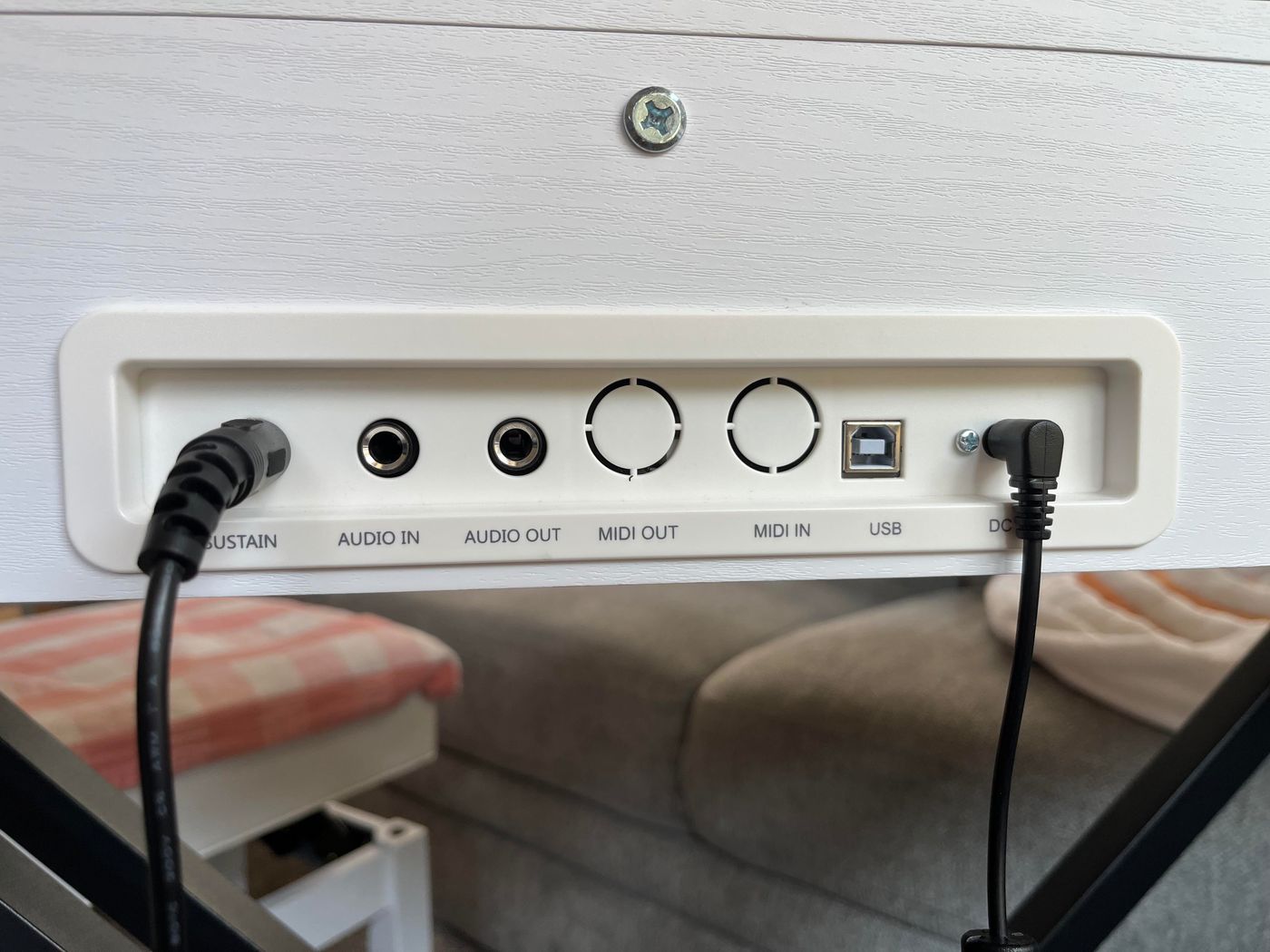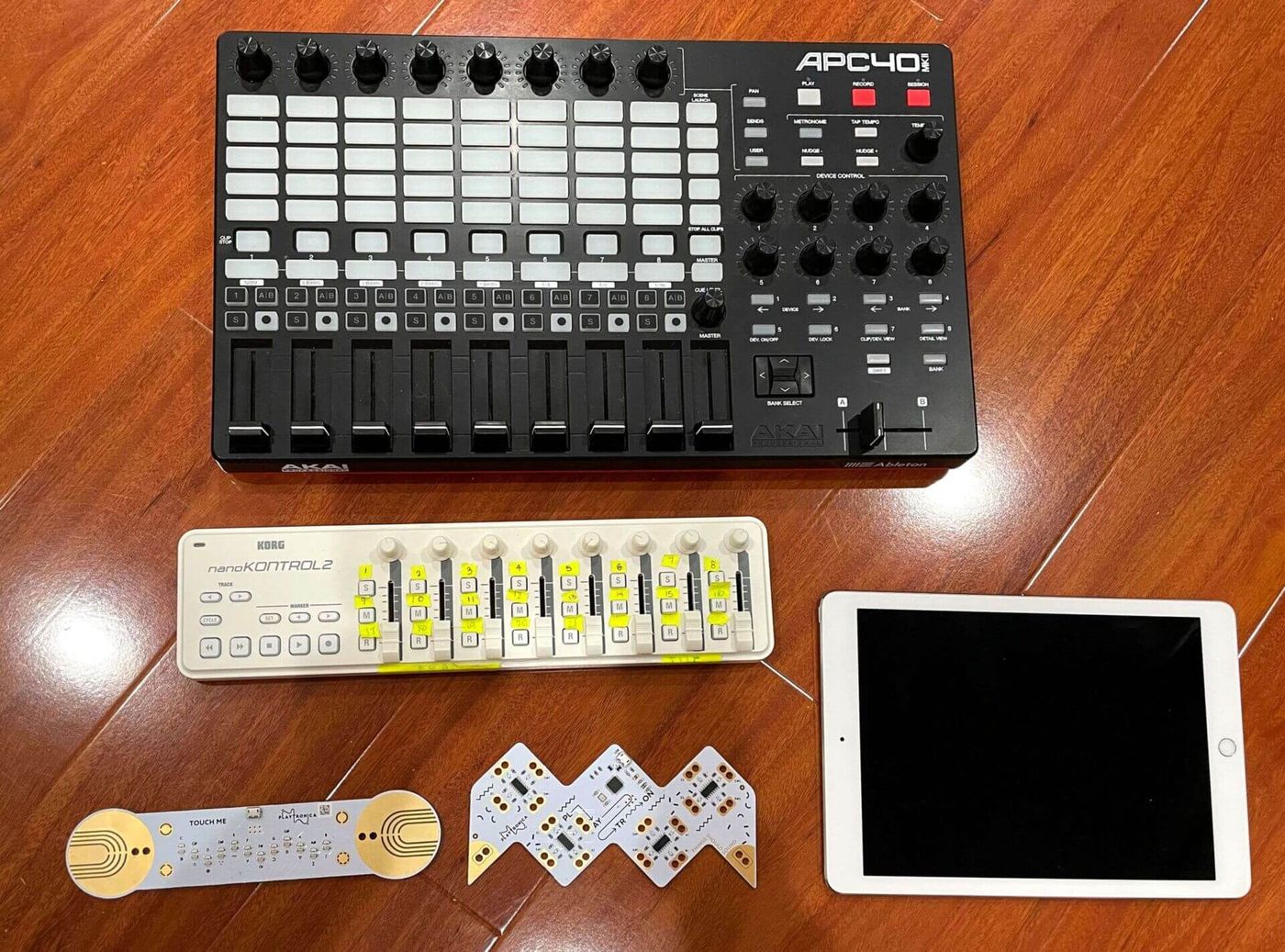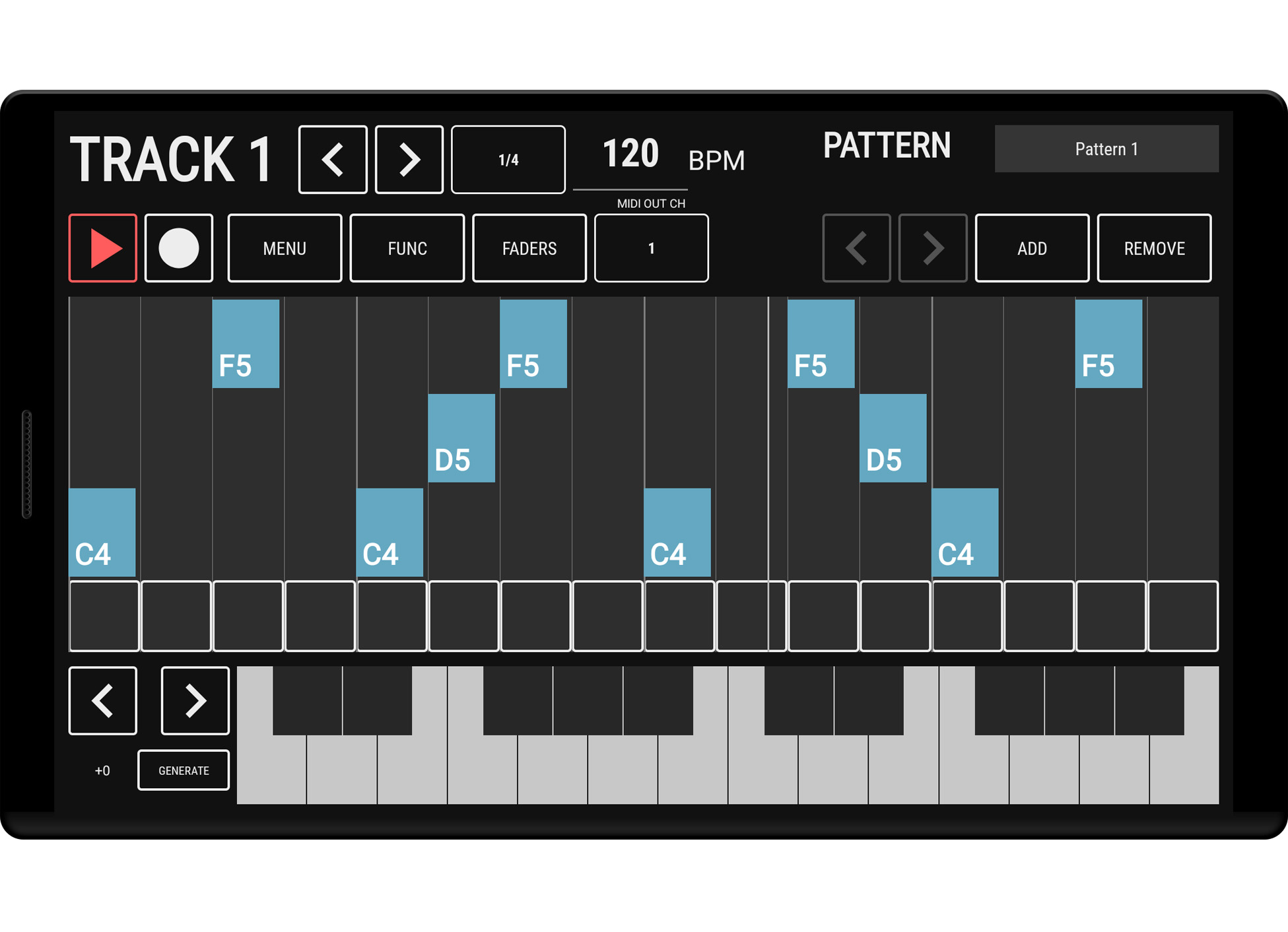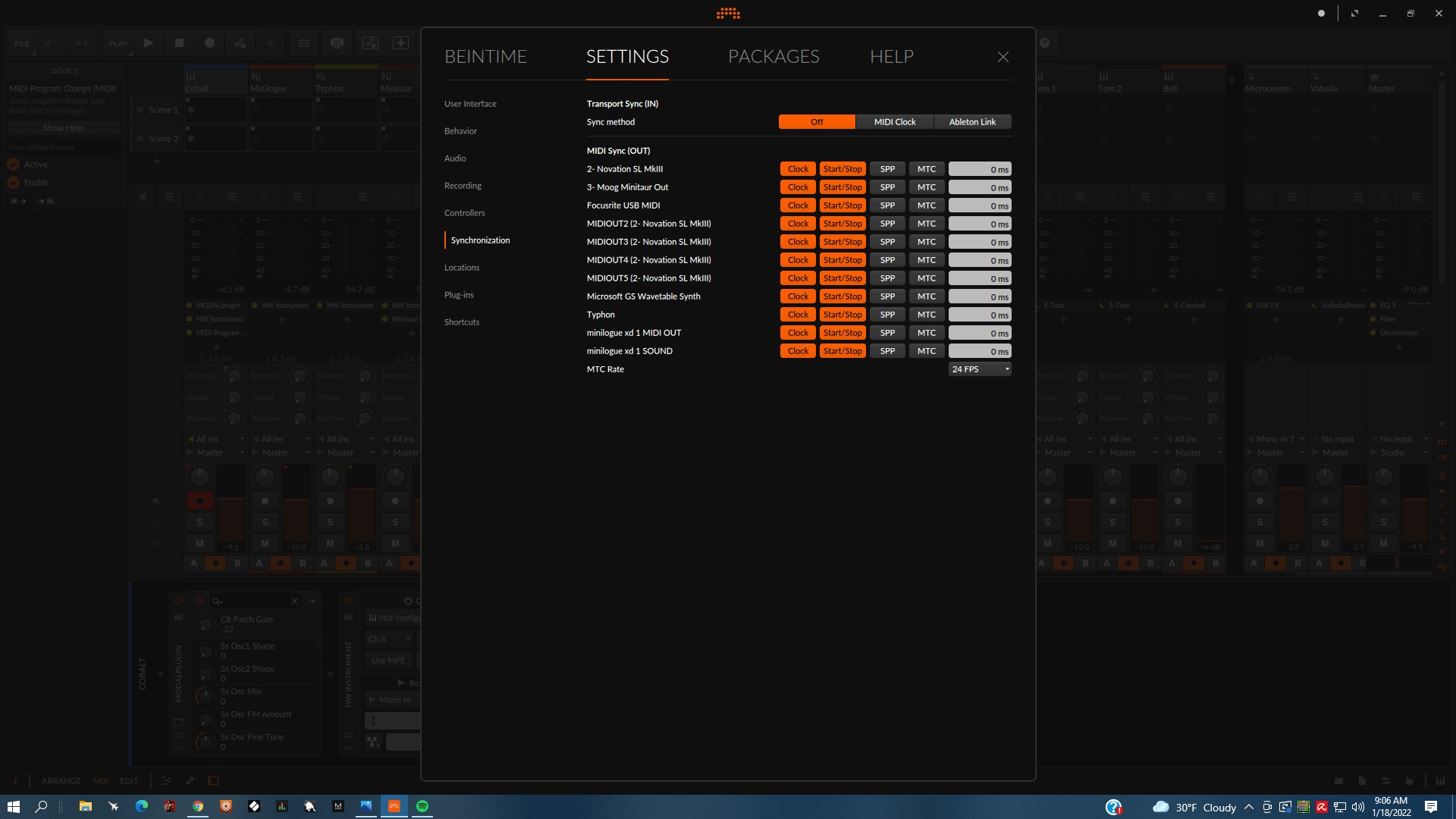Home>Production & Technology>MIDI>What Is MIDI Output?


MIDI
What Is MIDI Output?
Published: February 19, 2024
Discover the power of MIDI output and its role in digital music production. Learn how MIDI technology revolutionizes music creation and performance. Explore the endless possibilities of MIDI!
(Many of the links in this article redirect to a specific reviewed product. Your purchase of these products through affiliate links helps to generate commission for AudioLover.com, at no extra cost. Learn more)
Table of Contents
Introduction
MIDI, which stands for Musical Instrument Digital Interface, is a powerful and versatile communication protocol that has revolutionized the way music is created, recorded, and performed. At the heart of MIDI technology lies the concept of MIDI output, a fundamental component that enables electronic instruments, computers, and other devices to communicate with each other in the language of music.
MIDI output plays a crucial role in the seamless transmission of musical data, allowing for the synchronization of various musical elements, such as notes, tempo, dynamics, and control signals. As a result, it has become an indispensable tool for musicians, producers, and audio engineers seeking to harness the full potential of electronic music production and performance.
In this article, we will delve into the intricacies of MIDI output, exploring its functionality, types, and applications. By gaining a deeper understanding of MIDI output, readers will be able to appreciate its significance in the realm of music technology and its profound impact on the creative process. Let's embark on a journey to unravel the inner workings of MIDI output and discover the myriad possibilities it offers to music enthusiasts and professionals alike.
Understanding MIDI Output
MIDI output is a pivotal aspect of the MIDI protocol, serving as the channel through which musical instructions and data are transmitted from a MIDI-enabled device to external equipment. Essentially, MIDI output facilitates the seamless communication between various electronic instruments, computers, and audio hardware, allowing them to synchronize and interact harmoniously within a musical environment.
At its core, MIDI output functions as a conduit for conveying a diverse array of musical information, including note data, control commands, tempo changes, and performance nuances. When a musician plays a MIDI-enabled keyboard, for instance, the instrument generates MIDI data, which is then transmitted through the MIDI output port to external devices such as synthesizers, samplers, or DAW software. This transmission of musical instructions enables the recipient devices to reproduce the musical performance accurately, ensuring that the intended musical expression and nuances are faithfully conveyed.
Moreover, MIDI output empowers musicians and producers to exert precise control over a wide range of parameters, such as pitch, modulation, velocity, and expression. By harnessing the capabilities of MIDI output, artists can manipulate and shape the sonic characteristics of their performances, thereby unleashing a realm of creative possibilities that transcend the limitations of traditional acoustic instruments.
Furthermore, MIDI output is not confined to the realm of musical performance alone. It extends its influence to encompass the realm of studio production, live performances, and interactive installations, where it serves as the linchpin for integrating diverse musical elements and technologies. Through MIDI output, electronic instruments and audio equipment can communicate seamlessly, enabling the creation of intricate musical arrangements, elaborate soundscapes, and immersive sonic experiences.
In essence, understanding MIDI output is pivotal for anyone seeking to navigate the dynamic landscape of modern music production and performance. By grasping the role and functionality of MIDI output, musicians and audio professionals can harness its potential to craft compelling musical compositions, shape captivating soundscapes, and push the boundaries of sonic innovation. The profound impact of MIDI output reverberates across the realms of music creation, production, and performance, underscoring its status as a cornerstone of contemporary music technology.
How MIDI Output Works
MIDI output operates on a remarkably efficient and structured mechanism, facilitating the seamless transmission of musical data between interconnected devices. At its core, MIDI output functions as a conduit for conveying a diverse array of musical information, including note data, control commands, tempo changes, and performance nuances.
When a musician interacts with a MIDI-enabled instrument, such as a keyboard or electronic drum pad, the instrument's sensors detect the nuances of the performance, translating them into MIDI data. This data is then channeled through the MIDI output port, where it embarks on a journey to its destination, be it a synthesizer, a computer running digital audio workstation (DAW) software, or any other MIDI-compatible device.
The transmission of MIDI data occurs in a digital format, comprising a series of binary messages that encapsulate various musical parameters. These messages are structured in a standardized format, ensuring compatibility and interoperability across a wide spectrum of MIDI-enabled devices.
Fundamentally, MIDI output operates on a "source-destination" paradigm, where the originating device serves as the source of MIDI data, while the receiving device acts as the destination. The MIDI output port of the source device serves as the gateway through which the MIDI data embarks on its journey, traversing MIDI cables or digital interfaces to reach its intended destination.
Upon reaching the recipient device, the MIDI data is interpreted and utilized to reproduce the musical performance or enact the specified control commands. This seamless translation and execution of MIDI data enable the recipient device to faithfully reproduce the musical nuances, dynamics, and expressive elements of the original performance, ensuring a cohesive and synchronized musical experience.
Furthermore, MIDI output operates on a real-time basis, allowing for instantaneous and continuous communication between interconnected devices. This real-time aspect of MIDI output is instrumental in facilitating live performances, studio recording sessions, and interactive musical installations, where precise synchronization and responsiveness are paramount.
In essence, the functionality of MIDI output hinges on its ability to facilitate the seamless transmission of musical instructions and data, enabling interconnected devices to communicate, synchronize, and collaborate harmoniously within the realm of music production and performance. Its structured and efficient mechanism underpins the foundation of modern music technology, empowering musicians, producers, and audio professionals to realize their creative visions and push the boundaries of sonic innovation.
Types of MIDI Output
MIDI output manifests in various forms, each catering to specific requirements and scenarios within the realm of music production, performance, and technology. Understanding the different types of MIDI output is instrumental in navigating the diverse landscape of MIDI-enabled devices and audio equipment. Let's delve into the distinct categories of MIDI output and explore their unique characteristics:
-
Hardware MIDI Output Ports:
Hardware MIDI output ports are a ubiquitous feature in MIDI-enabled instruments and audio hardware. These dedicated ports serve as the primary means of transmitting MIDI data from the source device to external equipment. Typically utilizing 5-pin DIN connectors, hardware MIDI output ports facilitate reliable and low-latency communication, making them indispensable for connecting keyboards, synthesizers, drum machines, and other MIDI-compatible instruments to external sound modules, samplers, and recording equipment. -
USB MIDI Output:
With the proliferation of digital technology, USB MIDI output has emerged as a prevalent and versatile form of MIDI connectivity. Many modern MIDI controllers, keyboards, and audio interfaces are equipped with USB MIDI output, enabling seamless communication with computers, tablets, and mobile devices. USB MIDI output offers the advantage of plug-and-play functionality, eliminating the need for dedicated MIDI interfaces and simplifying the integration of MIDI-enabled devices into computer-based music production setups. -
Wireless MIDI Output:
Wireless MIDI output represents a cutting-edge innovation that liberates musicians and performers from the constraints of traditional cabling. By leveraging wireless protocols such as Bluetooth and Wi-Fi, wireless MIDI output empowers artists to communicate with MIDI-compatible devices without the limitations of physical connections. This form of MIDI output is particularly advantageous in live performance settings, enabling freedom of movement and streamlined setups for stage productions and interactive performances. -
Software MIDI Output:
In the realm of digital audio workstations (DAWs) and music software, software MIDI output plays a pivotal role in routing MIDI data within the digital domain. DAWs offer comprehensive MIDI routing and output capabilities, allowing users to direct MIDI data to virtual instruments, external hardware, and other software applications. Software MIDI output facilitates intricate MIDI signal processing, mapping, and routing, empowering producers and composers to orchestrate complex musical arrangements and interactive performances within the digital realm. -
Network MIDI Output:
Network MIDI output leverages Ethernet-based protocols to transmit MIDI data across local area networks (LANs) and the internet. This form of MIDI output enables seamless communication between MIDI-enabled devices situated in different physical locations, fostering collaborative music production, remote performances, and interactive installations. Network MIDI output transcends geographical boundaries, unlocking new avenues for musical collaboration and creative exploration across diverse global contexts.
In essence, the diverse array of MIDI output types reflects the dynamic evolution of music technology, catering to the multifaceted needs of musicians, producers, and audio professionals. By embracing the various forms of MIDI output, individuals can harness the full potential of MIDI technology, fostering innovation, collaboration, and boundless creativity within the ever-expanding landscape of music production and performance.
Applications of MIDI Output
MIDI output permeates a myriad of applications within the realm of music production, performance, and technology, serving as a linchpin for innovation, creativity, and seamless integration of musical elements. Its versatile nature and robust functionality have propelled MIDI output into diverse scenarios, each harnessing its capabilities to realize compelling musical experiences and technological advancements.
Studio Production and Composition
In the domain of studio production, MIDI output assumes a pivotal role in shaping musical compositions, orchestrating intricate arrangements, and sculpting sonic landscapes. Through the utilization of MIDI output, composers and producers can harness the expressive potential of MIDI-enabled instruments and controllers to craft dynamic and emotive musical pieces. The seamless transmission of MIDI data enables the integration of virtual instruments, synthesizers, and samplers, empowering artists to explore a vast spectrum of sounds and textures within the digital realm. Furthermore, MIDI output facilitates precise control over musical parameters, allowing for nuanced expression, intricate layering, and seamless synchronization of diverse musical elements.
Live Performances and Stage Productions
In the context of live performances, MIDI output empowers musicians and performers to orchestrate captivating sonic experiences, synchronize audiovisual elements, and execute elaborate stage productions with precision. By leveraging MIDI output, artists can seamlessly integrate electronic instruments, lighting systems, visual projections, and stage effects, creating immersive and dynamic performances that transcend traditional boundaries. The real-time communication facilitated by MIDI output enables seamless coordination between diverse elements of a live production, fostering a cohesive and impactful presentation that captivates audiences and elevates the live music experience.
Interactive Installations and Multimedia Art
MIDI output finds compelling applications in the realm of interactive installations and multimedia art, where it serves as a conduit for merging technology, music, and visual art into immersive and interactive experiences. Through the utilization of MIDI output, artists and technologists can create interactive environments, generative audiovisual installations, and responsive multimedia artworks that engage audiences on profound sensory levels. The versatility of MIDI output enables the seamless integration of sensors, interactive interfaces, and audiovisual systems, fostering dynamic and participatory experiences that blur the boundaries between technology, art, and human expression.
Collaborative Music Production and Remote Collaboration
In an era characterized by global connectivity, MIDI output facilitates collaborative music production and remote collaboration, transcending geographical barriers to foster creative synergy and collective innovation. By leveraging network MIDI output and digital connectivity, musicians and producers can collaborate across continents, exchanging musical ideas, performances, and production elements in real time. This interconnected approach to music creation harnesses the power of MIDI output to enable seamless communication and synchronization, paving the way for transcultural collaborations, cross-disciplinary projects, and boundary-defying musical expressions.
Educational Initiatives and Technological Innovation
MIDI output plays a pivotal role in educational initiatives and technological innovation, empowering students, researchers, and innovators to explore the frontiers of music technology and interactive media. Through the integration of MIDI output in educational curricula and research endeavors, emerging talents can delve into the realms of electronic music, interactive performance, and technological experimentation. MIDI output serves as a gateway to hands-on learning, technological exploration, and creative discovery, nurturing the next generation of music technologists, innovators, and boundary-pushing creators.
In essence, the applications of MIDI output encompass a rich tapestry of creative, technical, and collaborative endeavors, underscoring its profound impact on the realms of music production, performance, and technological innovation. By embracing the diverse applications of MIDI output, individuals and communities can harness its transformative potential to shape compelling musical experiences, foster interdisciplinary collaborations, and push the boundaries of sonic innovation within the ever-evolving landscape of music and technology.
Conclusion
In conclusion, MIDI output stands as a cornerstone of modern music technology, weaving a seamless thread of communication and creativity across diverse realms of music production, performance, and technological innovation. Its intrinsic role in facilitating the transmission of musical data, orchestrating intricate compositions, and fostering collaborative endeavors underscores its enduring significance in the dynamic landscape of music and technology.
The journey through the intricacies of MIDI output has unveiled its multifaceted nature, permeating studio production, live performances, interactive installations, collaborative initiatives, and educational endeavors. From the studio to the stage, from remote collaborations to multimedia art, MIDI output serves as a conduit for boundless creativity, technological integration, and expressive innovation.
By understanding the functionality and applications of MIDI output, musicians, producers, and audio professionals can harness its transformative potential to shape compelling musical experiences, foster interdisciplinary collaborations, and push the boundaries of sonic innovation. The versatility of MIDI output transcends traditional boundaries, empowering artists to explore new sonic frontiers, orchestrate captivating performances, and engage audiences on profound sensory levels.
As the landscape of music and technology continues to evolve, MIDI output remains a steadfast ally, enabling seamless communication, precise control, and boundless creativity within the ever-expanding realm of music production and performance. Its enduring legacy and transformative impact underscore its status as an indispensable tool for realizing creative visions, forging new pathways in music creation, and fostering collaborative endeavors that transcend geographical barriers and cultural boundaries.
In essence, MIDI output encapsulates the spirit of innovation, collaboration, and boundless creativity, serving as a testament to the enduring influence of technology in shaping the future of music. By embracing the profound capabilities of MIDI output, individuals and communities can embark on a journey of sonic exploration, creative discovery, and collaborative synergy, ushering in a new era of musical expression and technological ingenuity.
The journey through the intricacies of MIDI output has unveiled its multifaceted nature, permeating studio production, live performances, interactive installations, collaborative initiatives, and educational endeavors. From the studio to the stage, from remote collaborations to multimedia art, MIDI output serves as a conduit for boundless creativity, technological integration, and expressive innovation.
By understanding the functionality and applications of MIDI output, musicians, producers, and audio professionals can harness its transformative potential to shape compelling musical experiences, foster interdisciplinary collaborations, and push the boundaries of sonic innovation. The versatility of MIDI output transcends traditional boundaries, empowering artists to explore new sonic frontiers, orchestrate captivating performances, and engage audiences on profound sensory levels.
As the landscape of music and technology continues to evolve, MIDI output remains a steadfast ally, enabling seamless communication, precise control, and boundless creativity within the ever-expanding realm of music production and performance. Its enduring legacy and transformative impact underscore its status as an indispensable tool for realizing creative visions, forging new pathways in music creation, and fostering collaborative endeavors that transcend geographical barriers and cultural boundaries.
In essence, MIDI output encapsulates the spirit of innovation, collaboration, and boundless creativity, serving as a testament to the enduring influence of technology in shaping the future of music. By embracing the profound capabilities of MIDI output, individuals and communities can embark on a journey of sonic exploration, creative discovery, and collaborative synergy, ushering in a new era of musical expression and technological ingenuity.











